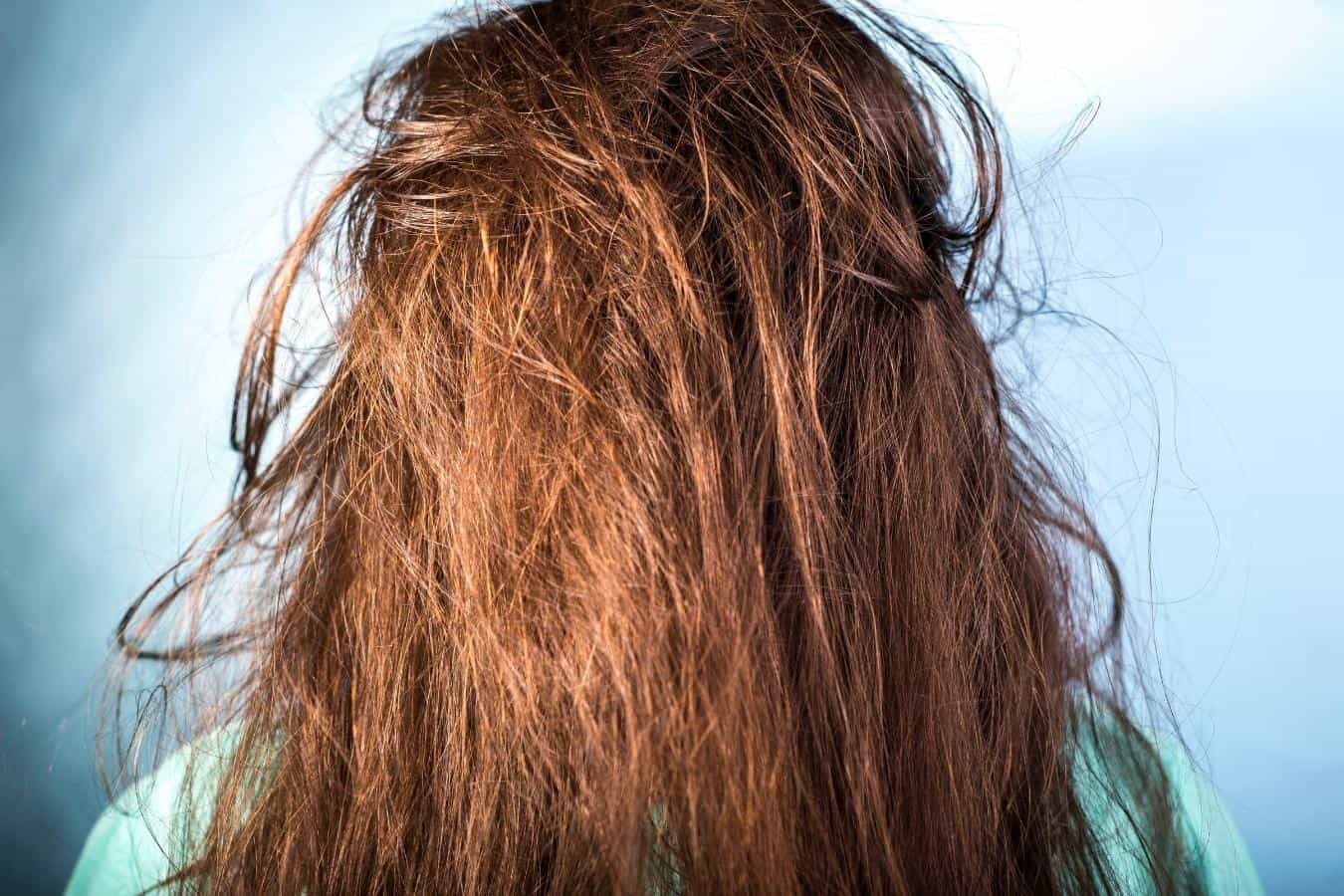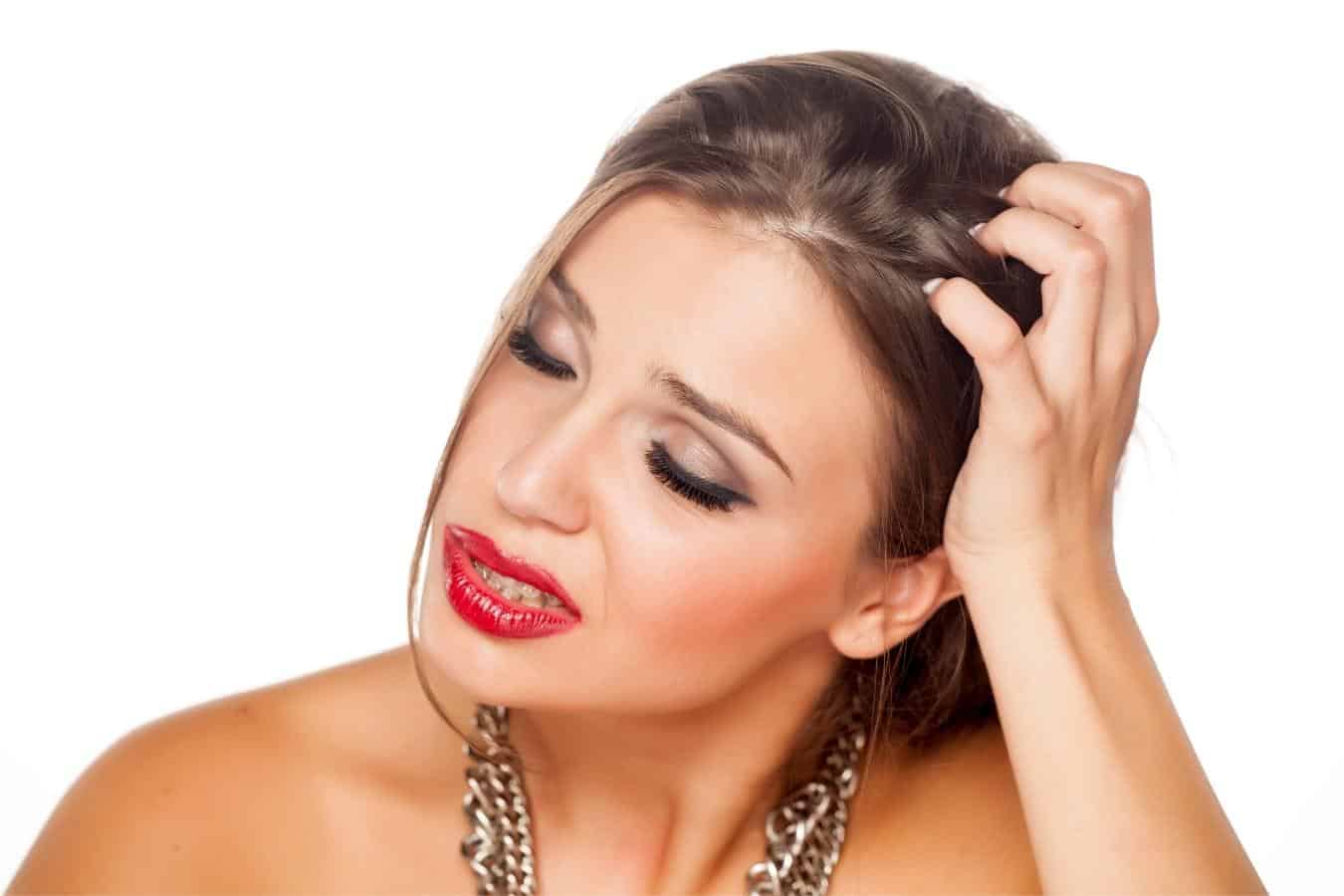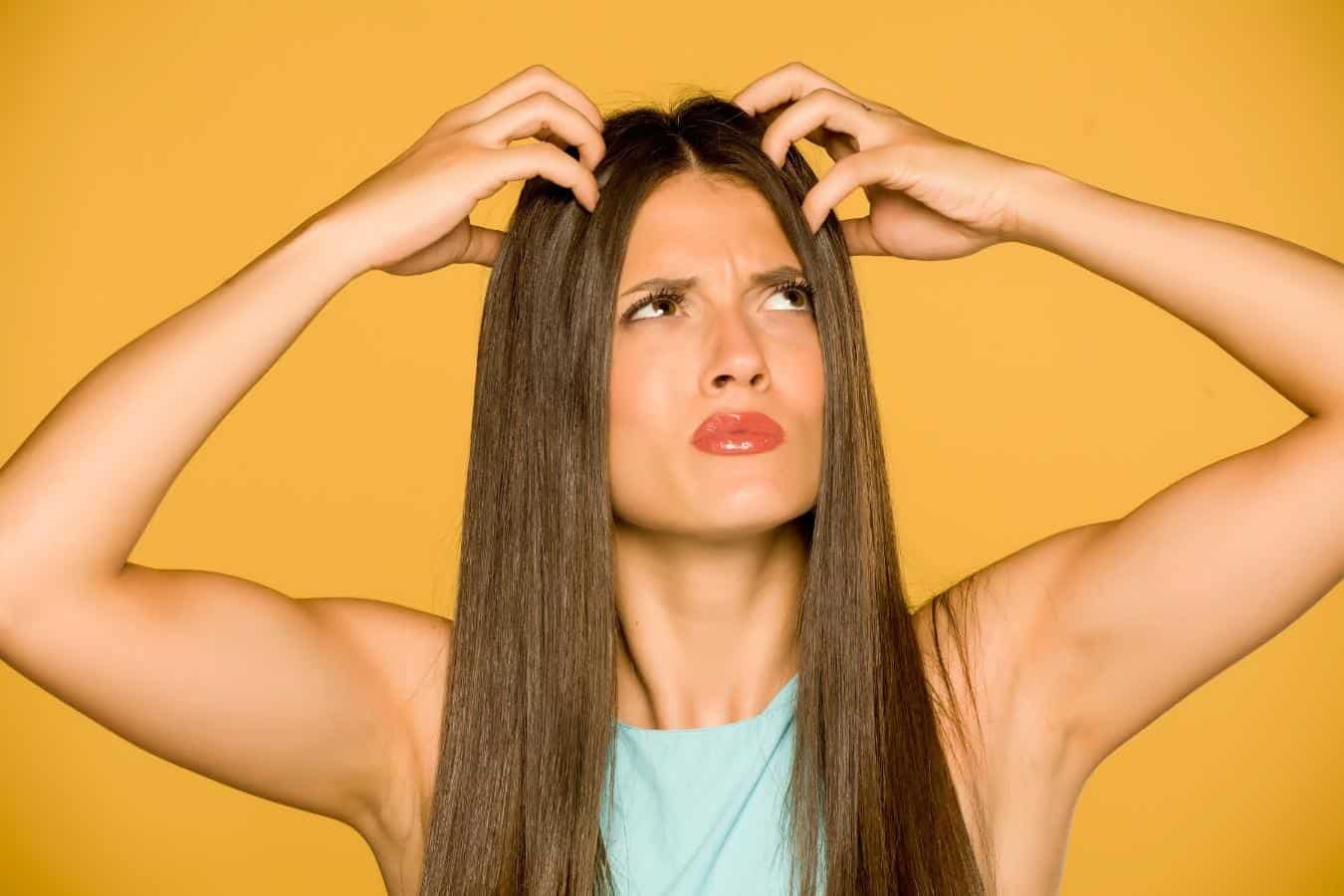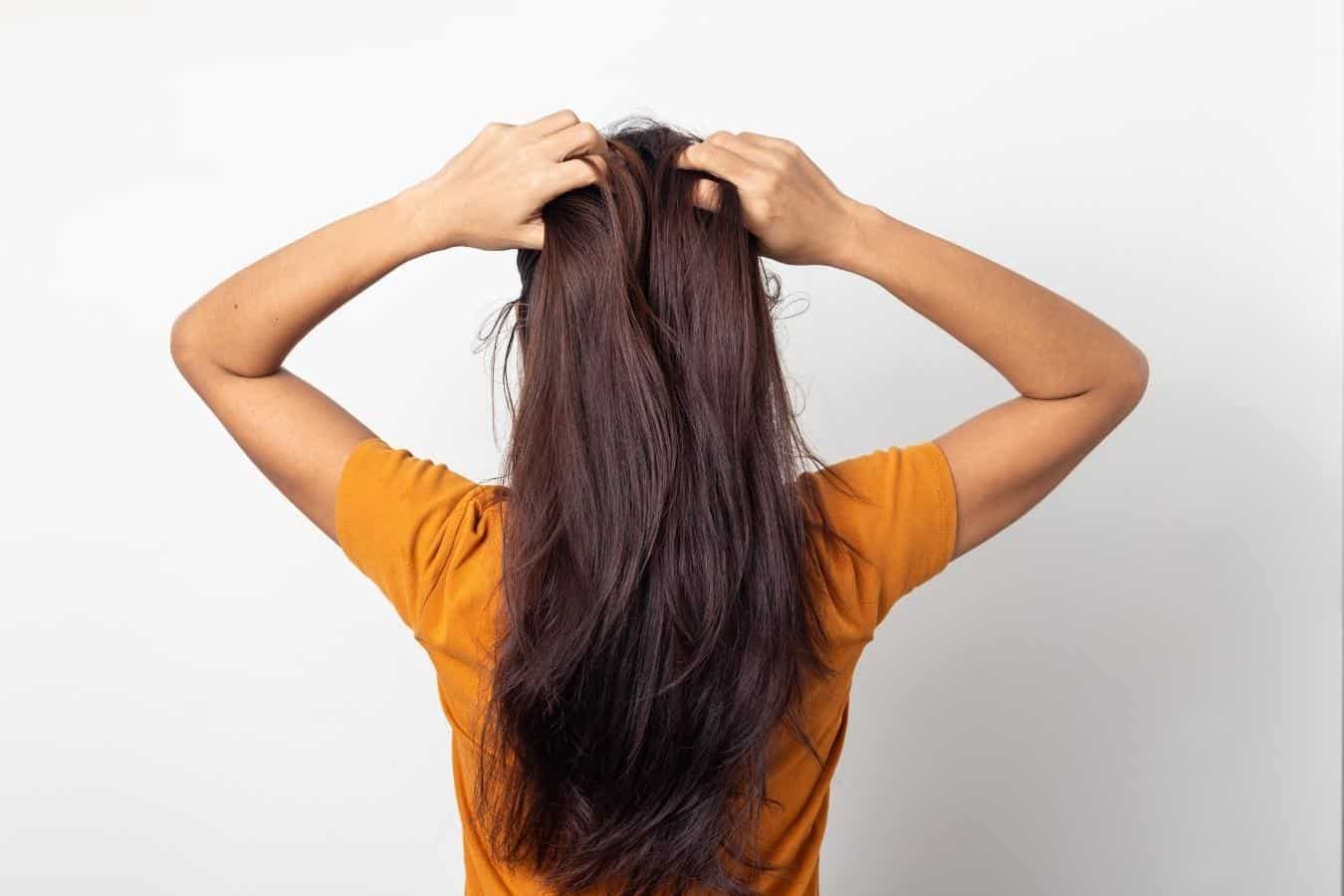If your hair is looking greasy, limp, and dull, the solution may be not to get a new product, but to get rid of product build-up. For this, you will need a clarifying shampoo. In this article, we’ll explain the 7 most important signs that your hair needs to be clarified.

1. Your scalp is itchy and irritated
Itchiness is a big sign that product build-up is irritating your scalp.
Try sectioning off your hair and check different areas of your scalp. Is it red? Are their areas that look either dry and crusty or very oily?
According to Medical News Today, this may be a sign that your scalp is reacting to a build-up of chemicals and products in your hair.
You may not be initially sensitive to a certain product, however, the longer the chemical stays on your scalp, the higher chances of irritation.
2. Your hair is greasy

Oily hair is one of the number one signs hair needs to be clarified.
In an interview with Byrdie, dermatological and chief medical officer Iris Rubin explained that many hair products use waxes, oils, and other chemicals that can stick to hair.
The first sign is limp hair. The oils weigh down the strands, so lie flat or can’t hold their curl or shape even with styling.
Eventually, your hair starts to feel really greasy. Using products like dry shampoo actually adds to the residue, and switching shampoos won’t help either.
You’re adding ingredients without clearing up the oily residue.
Rubin says that clarifying treatments act like a “hair detox” that removes residue. Clarifying shampoos can make a change almost immediately, making your hair instantly look better.
3. You’re shedding more hair than usual
Product build-up can clog your hair follicles, slowing down and suffocating your hair growth.
In an interview with MindBodyGreen, board-certified dermatologist Adarsh Vijay Mudgil, M.D said that extreme build-up can lead to inflammation, which will cause you to shed more hair.
Product build-up also encourages the proliferation of bacteria and can lead to scalp conditions like folliculitis.
Here, swollen follicles become infected, and are surrounded by small, white bumps.
Left untreated, folliculitis can also lead to hair fall and bald spots.
Besides, hair growth starts with a healthy scalp—so any problem with follicles, or chemical build-up that affects the overall PH balance of your scalp, can lead to slower growth or faster hair loss.
This is where clarifying treatments can work wonders as they remove chemicals to restore the scalp to its natural state.
4. You’ve been swimming often

We’ve learned to protect our skin whenever we go to the beach or the pool by slathering large amounts of sunblock… but do we remember to protect our hair?
The chlorine and chemicals from the swimming pools can dry out your hair, and will even stick to your strands.
That’s why your hair can often feel stiff or coarse after a day in the pool.
Sometimes, chlorine will even make your hair look a little green. We’re all for colored hair, but not by accident—and not this way!
You can protect your hair by wearing a swimming cap, or using a UV-resistant hair spray or hair oil before jumping into the pool.
When you’re done with your fun in the sun, use a clarifying treatment to purge out all those pool chemicals—and the greenish tinge.
5. You live in a hard water area
Hard water isn’t bad for your health, but it can affect your hair. That’s because it contains minerals like magnesium and calcium which can form a film on your scalp and strands.
According to a study published in the National Library of Medicine, participants who washed their hair for 30 days already showed signs of damage.
This can include:
- Brittleness and higher risk for split ends and damage
- Thinning hair
- Tangled hair
- Dry, irritated scalp
- Dull hair
- Frizziness
- Brassy, or green-tinged hair
Another study confirmed that long-term exposure to hard water can also cause hair breakage and thinning hair.
It can also change the texture of your so that it’s more difficult to style or color.
Yes, living with hard water can be hard—but you can still have beautiful hair.
You can take preventive steps, like using a water softener shower head that contains carbon to filter out the minerals.
Then, use a clarifying shampoo or treatment to deep-clean your hair.
6. Your scalp smells
Oils, sweat, and chemical build-up create the perfect breeding ground of odor-causing bacteria.
If you’ve never had this problem before—and your favorite shampoo usually makes your hair smell great—then it’s one of the sure signs hair needs to be clarified ASAP.
7. You’ve got dandruff

Dandruff is caused by oily scalp, the presence of a yeast-like fungus called lassezia that feeds on scalp oils, or skin irritations and infections.
According to the Mayo Clinic, All these three causes can be triggered by product build-up. So even if you buy a dandruff-control shampoo, you’re not really going to the root of the problem.
And if the shampoo is very harsh, it may actually irritate your scalp—or cause other hair problems, like frizziness or dry hair.
Before trying out any new hair products, detox your hair with a clarifying shampoo or treatment, and see if that solves the problem.
Frequently asked questions
That depends on your hair type and routine. If you use a lot of styling products or live in a hard water area, use a treatment twice a month. If your hair is dry, only use a clarifying treatment when you feel your hair is getting oily.
Yes. The only time to avoid clarifying treatment is if you have just colored your hair, or if your hair color is already fading and you’re trying to stretch time until your next appointment.
If you have curly hair or dry hair, make sure to get sulfate-free shampoos that won’t strip your hair of natural oils. If you have colored hair, look for products that are labeled “color-safe” and have hydrating ingredients. If you have an irritated scalp, look for shampoos that are gentle, and free of chemicals that can irritate the skin like parabens and artificial fragrances.
Some popular DIY clarifying washes are apple cider vinegar mixed with water or baking soda mixed with water. You can add a few drops of essential oil to make it more fragrant. Rubbing baking soda into the scalp (like a hair scrub) is also effective for very oily scalps and heavy build-up, but can remove color pigments.
Disclaimer: This site is not intended to provide professional or medical advice. All of the content on LovedByCurls.com is for informational purposes only. All advice should be followed at your own discretion. Ingredients may change at any time so always check the product label before using. Check our full disclaimer policy here.
